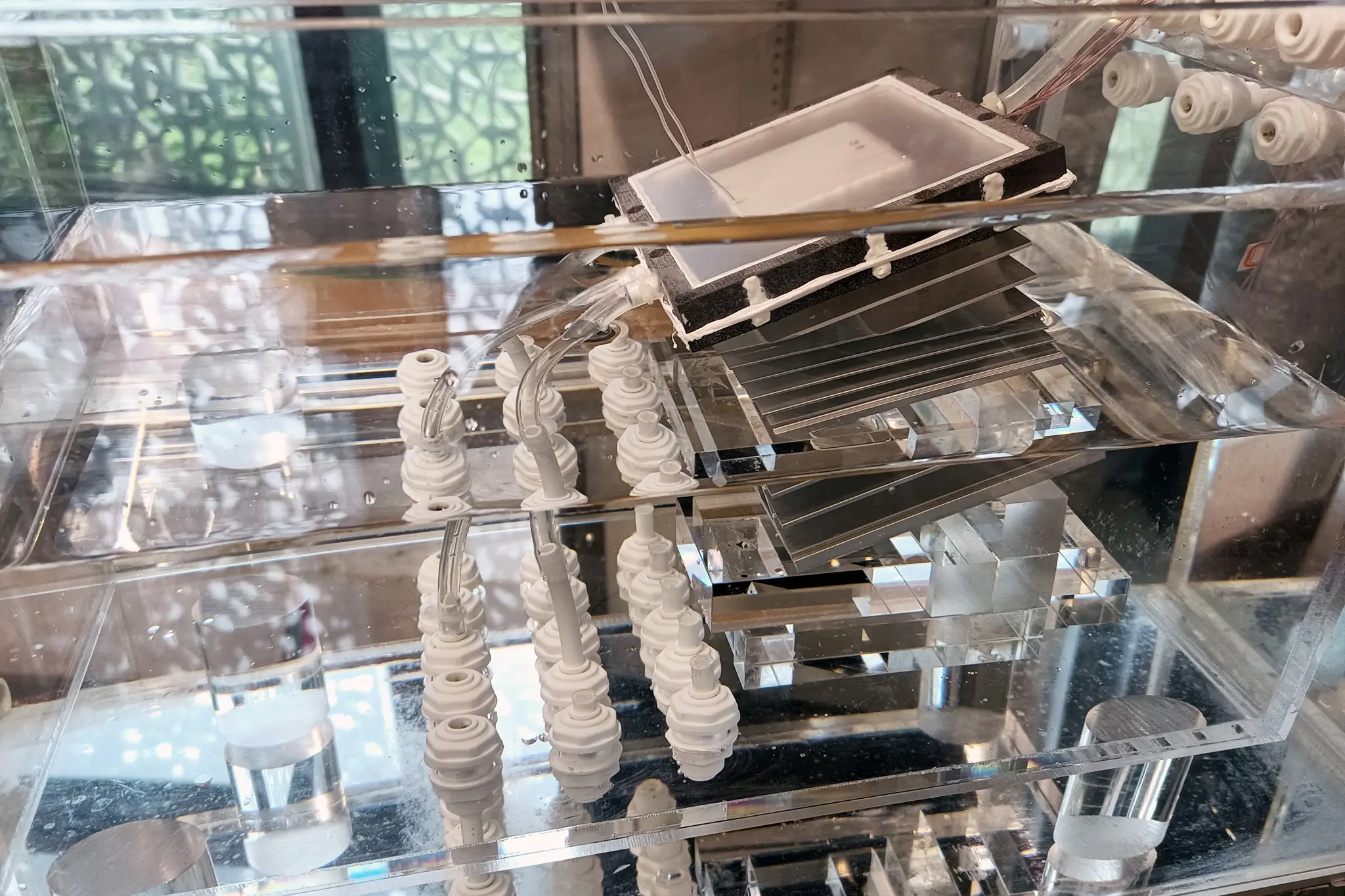The configuration of the device allows water to circulate in swirling eddies, in a manner similar to the much larger “thermohaline” circulation of the ocean. This circulation, combined with the sun’s heat, drives water to evaporate, leaving salt behind. The resulting water vapor can then be condensed and collected as pure, drinkable water. In the meantime, the leftover salt continues to circulate through and out of the device, rather than accumulating and clogging the system.
The new system has a higher water-production rate and a higher salt-rejection rate than all other passive solar desalination concepts currently being tested.
The researchers estimate that if the system is scaled up to the size of a small suitcase, it could produce about 4 to 6 liters of drinking water per hour and last several years before requiring replacement parts. At this scale and performance, the system could produce drinking water at a rate and price that is cheaper than tap water.



I’d normally agree, but the sheer necessity of desalination in the next couple of decades might actually make a dent in this issue, as the downstream effects might actually affect some profit margins. The real issue is scaling, as most of the “revolutionary” desalination headlines are generally only slightly more efficient, but often have issues staying operational for long periods of time. This might have a bit of an edge on those (being completely passive, and already trying to work on the issue of salt buildup clogging the system), but I got the feeling from reading the article that they hadn’t figured out whether or not they could scale it beyond (essentially) a basic water collection service for very small communities, at least not yet.
Whether or not they can scale it is always a technical concern as to if its practical or not yes, but Scaling costs $, wheres that money going to come from if they find they can reasonably scale it…Hmmm?
It’s based in China, and I’m not even sure how goverment aided funding works there, or for that matter how even private funding would. My point is there are bound to be those who will interfere with or straight up deny funding for things like this because it conflicts with OTHER competing interests. It’s like all the two dozen articles we hear about rechargeable battery innovations only worse…we get a lot of the “oh thats cool, I sure hope that comes to pass”…“Thats neat good for those guys !” crowd who are always asking the same question years later if they ever do at all, that i ask up front… Where is this product…? Why am I not able to go out and purchase this marvelous thing to improve my life and the lives of those around me. I dont expect it yesterday, but it would be nice if we could ever see things like this actually become readily available soon after such praise and promising review, but they never do, and if they do they’re never affordable…because if it’s convenient it never is. If its that cool it’s usually a tool only the wealthy can ever afford or have access to.
But usually all talk of it seems to just fade away like no one ever even heard of it… This article disappears in time, and no updates are discussed ever again, but I’m never supposed to critically question anything…I’m supposed to have faith that it will all work out just like the tech bros envision it. The basic science and development i don’t have a problem with, but the absurd dogmatic pragmatism I do, and I’ve already explained to you why.